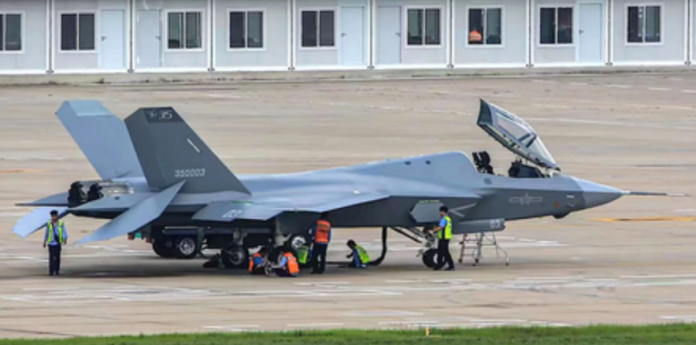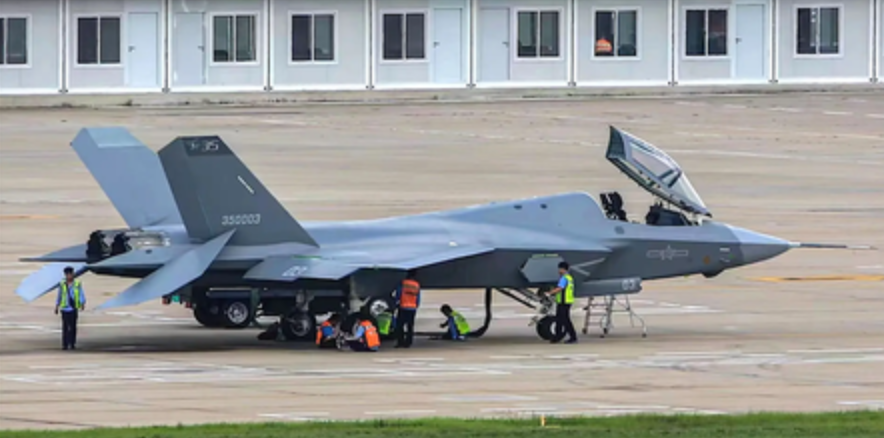
It was more than an exhibit of raw military ambition when China’s J-35 roared off the deck of the Fujian carrier in recent trials it marked a signal to the world that Beijing now fields a carrier-borne fifth-generation stealth fighter. For years, the People’s Liberation Army Navy has lacked a counterpart to America’s F-35B and F-35C, a gap in capabilities that has capped its maritime power projection. Now, on paper, that gap would seem to be narrowing.
But under this sleek, F-35-like silhouette is a far more complex reality the decisive factors of modern air combat-engine reliability, sensor fusion, avionics maturity, and network integration-are far harder to replicate than an airframe’s shape. Critical questions arise as the J-35 enters into service Will it be able to match the operational sophistication of the Lightning II, or will it remain merely a lookalike bereft of the “secret sauce” that makes the F-35 dominant? In the following listicle, nine critical dimensions of the promise-meets-limit situation are examined.
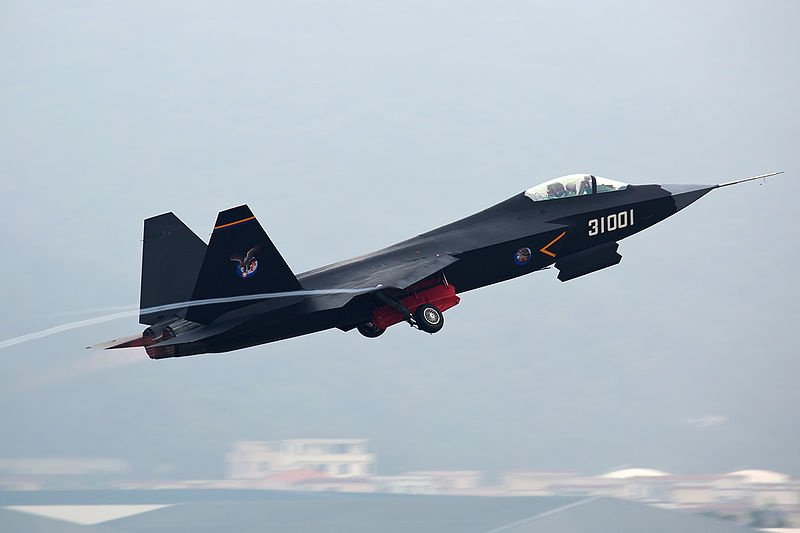
1. From FC-31 Prototype to Carrier-Capable Fighter
The J-35’s ancestry springs from the FC-31 “Gyrfalcon,” an export-oriented stealth demonstrator that first took to the skies back in 2012. Over the last decade, Shenyang Aircraft Corporation reworked the design into a CATOBAR-ready naval fighter with folding wings, reinforced landing gear, and a catapult launch bar for the Type 003 Fujian. This is a strategic evolution past China’s reliance on the J-15 derived from Russia’s Su-33 into an indigenous fifth-generation carrier aircraft. Images confirmed low-rate production with PLAN markings by mid-2025, a clear indication that the jet is progressing through carrier integration trials.
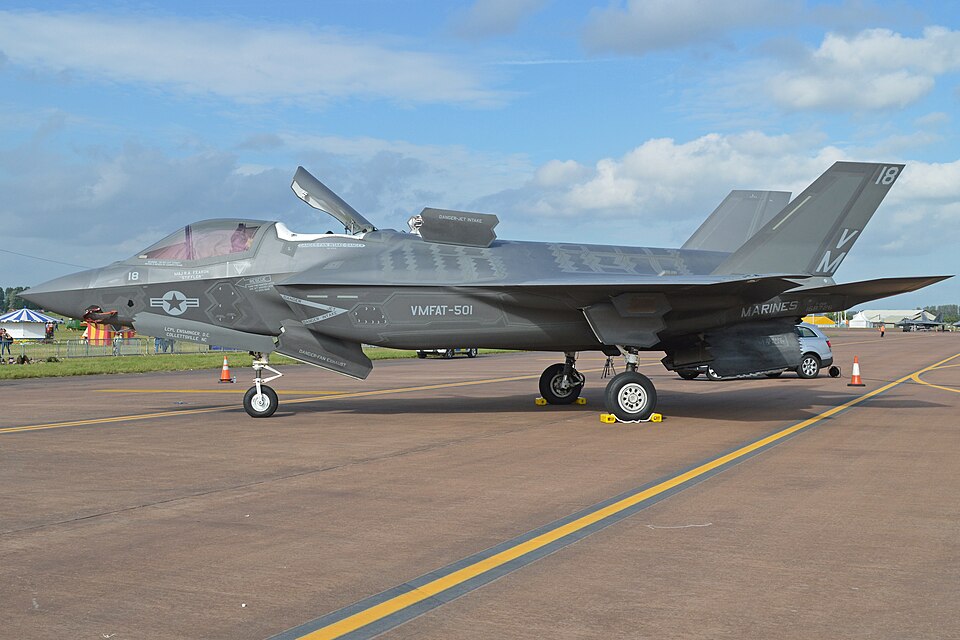
2. Strategic Leap in Maritime Power Projection
The J-35 provides China with a stealthy, carrier-capable fighter capable of operating well beyond the first island chain in ways that have been important to challenging U.S. and allied naval forces, which have long enjoyed advantages provided by hundreds of deployed F-35Bs and F-35Cs. This ability to field 80 airframes by the early 2030s could fully equip two Fujian-class carriers and replace aging J-15s while complicating Western operational planning in the Pacific.

3. Similarity in Airframes Masks Gaps in Functionality
From the outside, the J-35 is virtually identical to the F-35C smooth blended wing-body, canted tails, and internal weapons bays. There are reports that this may well be because of the cyber-theft of sensitive F-35 data. It is not just shape, however. Stealth needs precision manufacturing and proven radar-absorbent materials. The coatings and shaping of the F-35 have been combat-tested those of the J-35 have not.
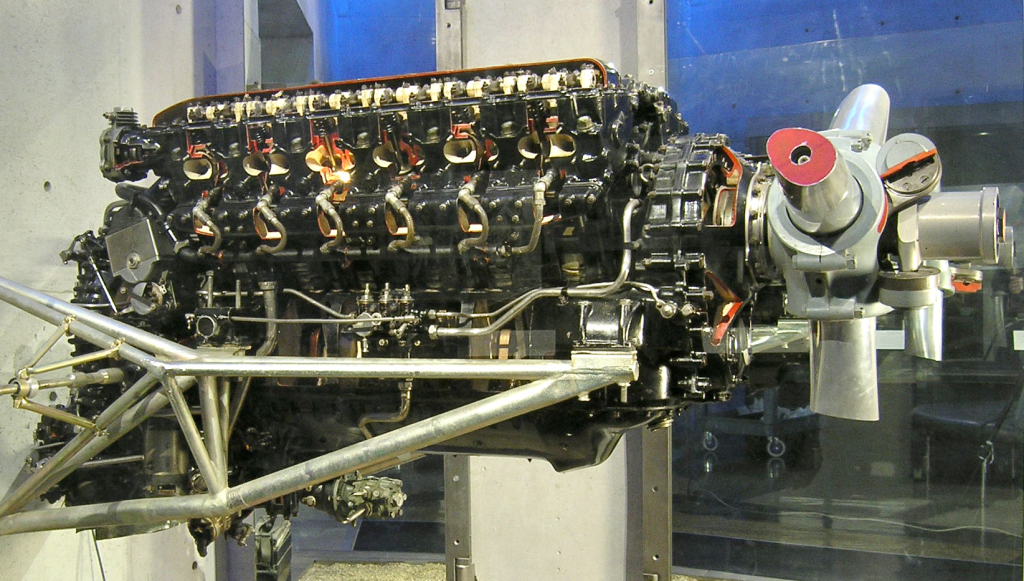
4. Engine Reliability: China’s Persistent Achilles Heel
The J-35 is powered by the afterburning turbofan Guizhou WS-19, an important part of China’s greater “Two Engines” indigenization agenda in military aero-engine production. Reliability in high-performance engines, as would be expected, remains an issue with links to advanced materials, turbine blade technology, and manufacturing processes. According to Janes, the PLA still relies on Russian powerplants for other frontline aircraft-a situation mirroring its inability to close the gap with the major Western engine makers such as Pratt & Whitney.

5. Supercruise and Thrust-to-Weight Questions
While on paper, the reported 22,000 lbs of thrust per engine for the WS-19 gives the J-35 some pretty good performance, it is unknown if it achieves F-22-style supercruise-sustained supersonic flight without afterburners. Supercruise would go a long way in extending combat engagement time and boosting survivability, but until the thrust-to-weight ratio data for the J-35 becomes available, direct comparisons with elite fighters like the F-22 or Su-27 are going to be speculative.
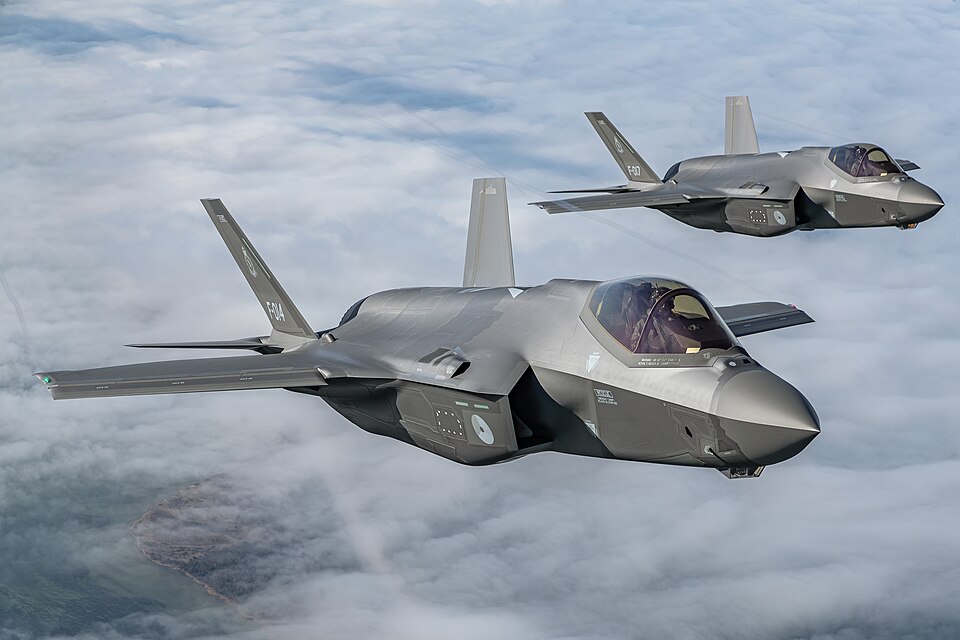
6. Sensor Fusion: The Real Decisive Edge
The battlefield dominance of the F-35 is rooted in its advanced sensor fusion, as it unites radar, infrared, and electronic warfare inputs onto one pilot display. U.S. Air Force wargames have demonstrated that this enables the Lightning II pilots to destroy numerous fourth-generation fighters well before being detected. With the J-35, AESA radar, IRST, and EW systems are foreseen but publicly available evidence does not show that it matches the F-35 for seamless integration or its large mission-data libraries.

7. Infrared Signature Management
Infrared stealth is becoming ever more essential in combat as enemy IR tracking systems modernize. On an F-35, the divert-less supersonic inlet and shaping of the exhaust reduces its heat signature. Presumably, twin engines might produce a larger IR footprint, with Chinese engineers experimenting with similar heat-dissipation techniques as the F-22. It’s not clear without operational data if these can offset the thermal disadvantage.
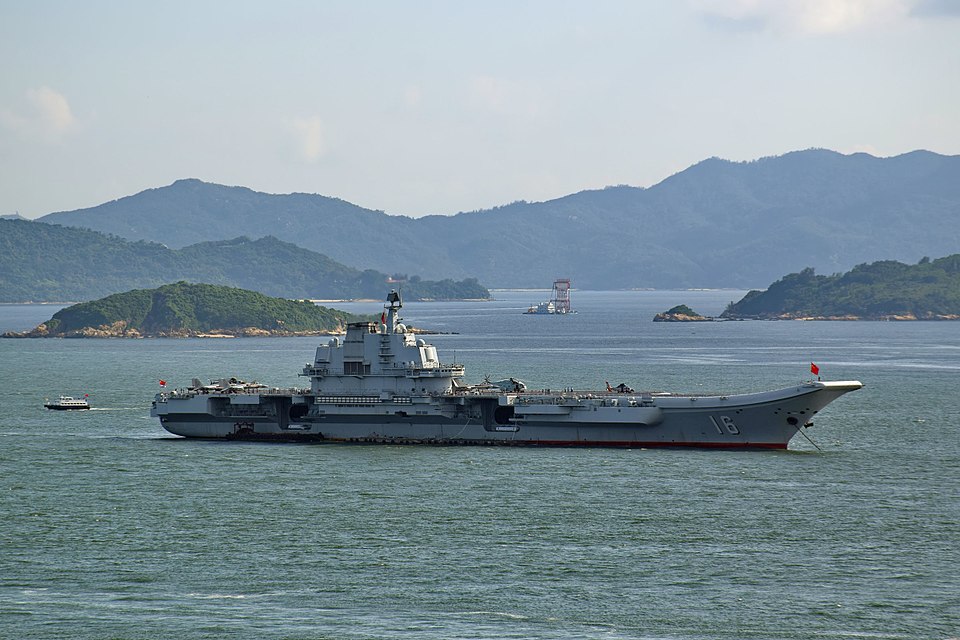
8. Naval Optimization and Payload Capacity
With its weapons bays apparently sized for heavier payloads without loss of stealth, carrier operations seem to have been built into the J-35’s design, possibly to give it an advantage in certain naval missions. Operating from electromagnetic catapults, the aircraft may launch with full fuel and weapons loads, something that could not be attained by the STOBAR-based Liaoning and Shandong. It enhances its scope in terms of A2/AD strategies pertinent in both the South and East China Seas.
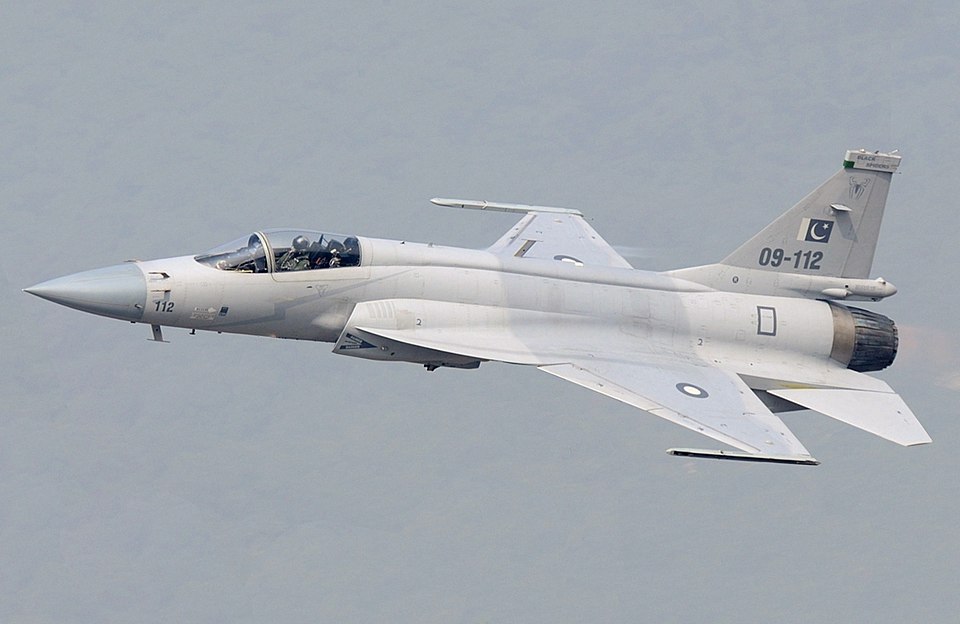
9. Export Ambitions and Regional Impact
Most recently, Pakistan reportedly ordered 40 J-35s, becoming the stealth fighter’s first foreign operator. For Islamabad, this could be a game-changing upgrade of its airpower, supplementing its existing inventories of JF-17 and J-10CE. For Beijing, such exports harden alliances and test the fighter in various operational environments, hastening feedback for upgrades.
The J-35’s arrival aboard China’s newest carriers does indeed mark a real milestone in Beijing’s military aviation, but its ultimate impact hinges on factors still in flux engine reliability, sensor fusion maturity, and integration into a broader combat network. Until those elements match the F-35’s proven ecosystem, the J-35 will remain a formidable but incomplete challenger in the Pacific’s evolving airpower balance.
